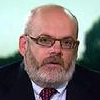Federal Reserve officials Wednesday will continue to stress that they will be “patient,” and that is largely being interpreted at this point to mean no hikes until at least June, economists said.
Since the financial market turmoil after their December meeting, so many Fed officials used the word in their speeches that it felt like the central bank has “done all but take out a Super Bowl ad that repeatedly flashes the word “PATIENT,” said Blake Gwinn, a market strategist at NatWest, in a note to clients.
But what does patient mean exactly?
“A March hike is unlikely at this point, that’s how I would interpret patience,” said Andrew Hollenhorst, chief U.S. economist at Citigroup.
Vince Reinhart, chief economist and investment strategist at Mellon, agreed: “They’re saying they are taking a pass on March.”
Fed officials finish a two-day meeting Wednesday setting monetary policy for the next six weeks. Fed Chairman Jerome Powell will hold a press conference after the decision.
The Fed chief previously announced that he’ll talk with reporters after each of the eight meetings this year. In the past, Fed leaders only held press conference four times a year.
The trick for Powell and his colleagues will be to keep alive the notion that the Fed’s next move on rates will be up after a pause.
Monetary policy tends to follows Isaac Newton’s first law of motion that a body at rest will remain at rest and a body in motion will remain in motion unless they are acted on by outside forces, Reinhart said.
The Fed’s forecast would justify further tightening, and Powell has been upbeat about the outlook, Reinhart noted. The Fed has penciled in two quarter-point rate increases this year although officials have stressed the moves are not set in stone.
Reinhart said that Powell doesn’t want to be seen as pushing interest rate hikes. He wants to be pulled by the data.
“Jay Powell doesn’t want to be the Fed chair to spark a market selloff by leading investors to expect policy tightening,” Reinhart said.
Instead, the Fed chair wants to see the market price in some further tightening on its own.
The S&P 500 SPX, +0.84% and Dow Jones Industrial Average DJIA, +1.20% have bounced more than 12% from the Christmas Eve lows. The S&P remains nearly 10% off its record high set in September.
The yields on the 10-year Treasury note TMUBMUSD10Y, +0.62% remains firmly below 3% level.
Powell and his colleagues are likely to disappoint investors hoping for a slow down in the pace of the program to shrink the balance sheet.
Read: Why the Fed may not announce a change to its balance sheet plan on Wednesday
At the moment, investors only see a 15% chance of a rate increase between now and the end of the year, according to CME Group’s FedWatch tool.
“Patience does not mean the Fed never wants to raise rates again,” Hollenhorst said.
James Glassman, chief economist for JP Morgan Chase Commercial Banking, said the Fed feels more comfortable now that its brought its benchmark rate up to a range of 2.25%-2.5%.
With 3% as a rough estimate of a “neutral” level, where interest rates are neither spurring or dampening growth, the Fed senses “they’re close to done,” Glassman said. This is a shift from three years ago when rates were pinned down near zero.
By moving rates up gradually, the central bank has pretty much eliminated the risk that they’d have to rush monetary policy tightening to quell an inflation outbreak, Glassman said.
Glassman, Hollenhorst and Reinhart all expect two rate hikes this year, although Hollenhorst said there is a greater chance the Fed does only one move rather than three increases.
All three said subdued inflation meant there was little hurry to hike.
Economists at UBS have marked down their expected path of rate hikes to one from two moves previous.
They see core inflation only hitting 1.9% in 2019.
“With our lower forecast and the more cautious tone of the FOMC, we think the Fed holds off hiking until September,” said Rob Martin, economist at UBS.



